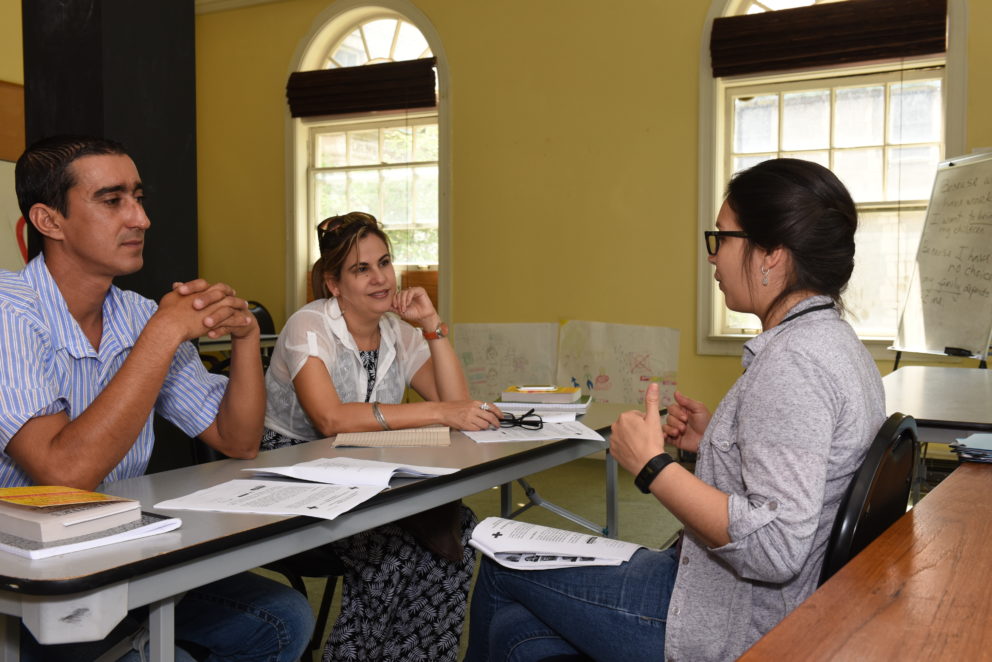Join the journey.
Become a KRM Partner today.
Refugee Resettlement Overview
According to the United Nations High Commissioner on Refugees (UNHCR), global displacement has reached an all-time high. With the number more than doubling during the last decade, there are now estimated to be more than 100 million refugees, asylum-seekers, and internally displaced people in the world. That means that about one in every 94 people has now been driven from their home.
After fleeing their home country, people seeking refugee status must register with the United Nations Refugee Agency in a country of asylum. UNHCR interviews applicants to determine if their protection claim merits refugee status. While conducting these determinations, UNHCR also collects biodata and biometrics from applicants. If refugee status is granted and refugees request resettlement in the U.S., applicants participate in additional interviews, the multiple security checks detailed above, and medical exams. According to the U.S. Department of State, the average processing time from referral to admission is 18-24 months.
Not all refugees request or receive resettlement; less than 1% of refugees are resettled in another country like the United States. Others stay in the country of asylum, working towards integrating into this new home. For some people, they wait years for their home country to be safe enough to voluntarily return home.
Learn more refugees through the U.S. Department of State resettlement program.
Who We Welcome
The U.S. resettlement program prioritizes the most vulnerable refugees — women, children, survivors of torture, the elderly and those with special medical needs. These individuals and families come from countries all over the globe. Currently, KRM welcomes refugees from Afghanistan, Bhutan, Burma, Cuba, Democratic Republic of Congo, Eritrea, Ethiopia, Haiti, Iraq, Pakistan, Palestine, Somalia, Sri Lanka, Sudan, Syria and Ukraine.
Refugee experiences are complex and varied. No two stories are the same. More than half of all global refugees are children under the age of 18. Half of the people seeking refugee status are living in cities of asylum and half are living in the traditional refugee “camps” that have historically housed refugees. People coming to the United States as refugees have varying educational levels and work experience. They are doctors, lawyers, teachers, carpenters, engineers, farmers, students, and more.
Refugees are legal entrants into the U.S. and their immigration document (I-94) has no expiration date. They are eligible to apply for their permanent residency after one year and to apply for citizenship after five years.
Cubans arriving to KRM are asylum-seekers who enter the country under the United States’ Cuban Adjustment Act (1966), which gives Cubans a preference for legal migration to the United States. In 2023, the introduction of a humanitarian parole sponsorship program for select nationalities offers an additional pathway of legal migration to the U.S. for Cubans (as well as Haitians, Nicaraguans and Venezuelans) through private sponsorships. Although they do not arrive with refugee status, Cubans are paroled into the U.S., becoming eligible to work, attend school, and build new lives here. Louisville, Kentucky, in particular, has a thriving Cuban community, because it is one of the select U.S. cities which offers services under this Cuban program. Currently, Louisville is 2nd only to Miami for Cubans arriving in search of asylum and resettlement services.
KRM History at a Glance
- 1990: KRM is founded by Donna Craig and began welcoming refugees to Louisville, Kentucky
- 1995: KRM is selected as a site for resettlement of Haitian and Cuban cases
- 1998: KRM opened a sub-office in Lexington, Kentucky
- 2006: KRM opened a Family Center in Louisville, Kentucky
- 2015: KRM celebrated 25 years of welcoming refugees
- 2020: KRM celebrated 30 years of welcoming refugees
- 2021: KRM opened a Northern Kentucky office, located in Covington, KY
Learn about KRM’s Mission and Vision on our About page.
U.S. History of Resettling Refugees
The United States was founded on these values: that all people are created equal and have rights no matter what they look like or where they come from. How we treat refugees reflects our commitment to the values that define us as Americans. Since after World War II, the U.S. has been welcoming refugees. We passed legislation to standardize the resettlement process in 1980. Refugees have defied all odds to leave behind discrimination, threats and even violence. Bringing your family here to build a better, safer life, is a quintessentially American thing to do.
Since 1975, the United States has welcomed over 3 million refugees. Most are now proud American citizens. Each year, the U.S. creates a goal to determine the number of refugees welcomed into the country. Throughout the history of the U.S. refugee resettlement program, yearly projections fluctuate, and in the past, the U.S. has resettled up to 200,000 refugees in one year.



You must be logged in to post a comment.